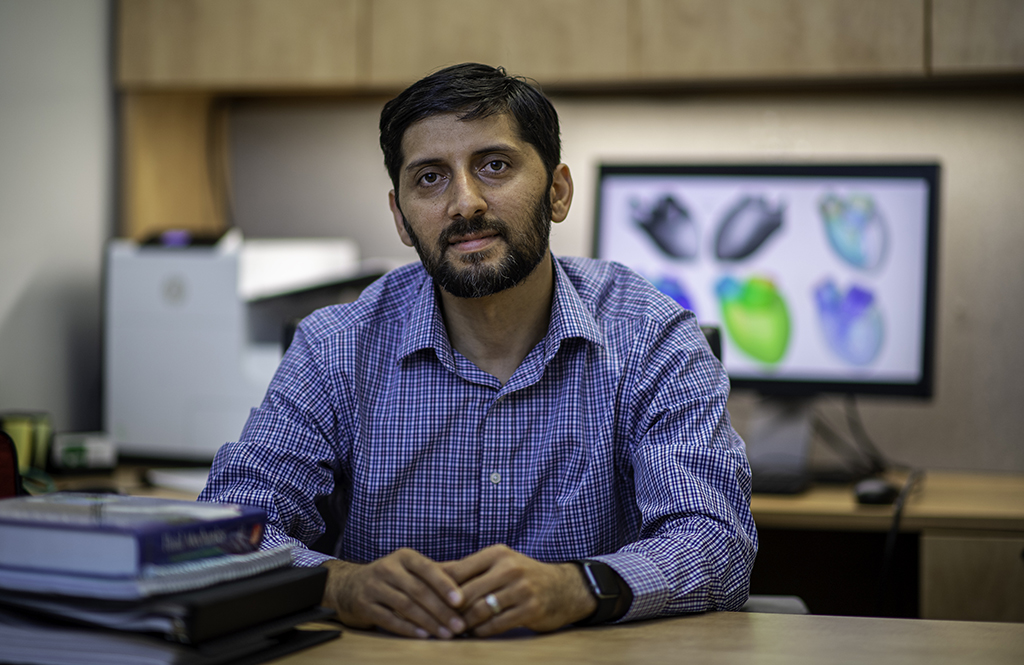
Hamid Sadat recently received $355,000 grant from the National Institutes of Health to examine calcific aortic valve (CAV) disease – the most common valve disease in elderly people and found in nearly 2.6 million people worldwide.
The funding will allow Sadat, alongside medical professionals at Baylor University Medical Center, to tackle the disease through three phases, the first of which focuses on developing a computational model to understand how CAV occurs and how it can be diagnosed.
“Right now, we know that low-density lipoproteins, or LDLs, are a key component in CAV – the agents interact with the valve and causes CAV, but we don’t know how,” said Sadat, assistant professor in the Department of Mechanical Engineering.
The team will use a unique computational code developed at UNT to model fluid dynamics and mimic the flow of blood through a heart.
“Our computational code has a unique and novel numerical technique that enables us to model CAV; it’s the first of its kind,” said Sadat.
The second phase of the study aims to understand how CAV interacts with the heart flow. Sadat and his team of graduate and undergraduate students plan to use the computational model to simulate traditional heart flow against the heart flow of a heart impacted by CAV.
“The dynamic of the valve will be significantly altered by CAV, affecting the ventricle performance in pumping blood out of the heart,” said Sadat. “We want to model and compare a healthy heart against one that’s been affected by CAV, but we wouldn’t be able to do so without completing the first phase of the study and gaining a better understanding of CAV. There is no study whatsoever dealing with CAV in the presence of the heart, so this will be a first for the field.”
The last phase focuses on CAV and its interactions with LVADs, or left ventricle assisted devices. LVADs are used to help pump blood through the heart, which inevitably changes the pressure across the valve.
“LVAD systems pull the blood up from the left ventricle above the valve, so coupling an LVAD with the heart alters everything about the dynamic. Not only does it potentially cause leakages in the valve, but it also changes the CAV patterns,” said Sadat. “It really changes everything.”
Sadat plans to have graduate and undergraduate students involved in the study so they can gain first-hand experience in one of the fastest growing fields in engineering.
“I think it’s extremely important for students to get involved in research like this,” he said. “Not only does it give students the chance to get involved in huge technological simulations, but it also allows them to understand how fluid interacts with complex morphing structures. These days, due to the advances in smart materials, many have started looking into using morphing structures in engineering designs, such as drones that can change their wing shape.”